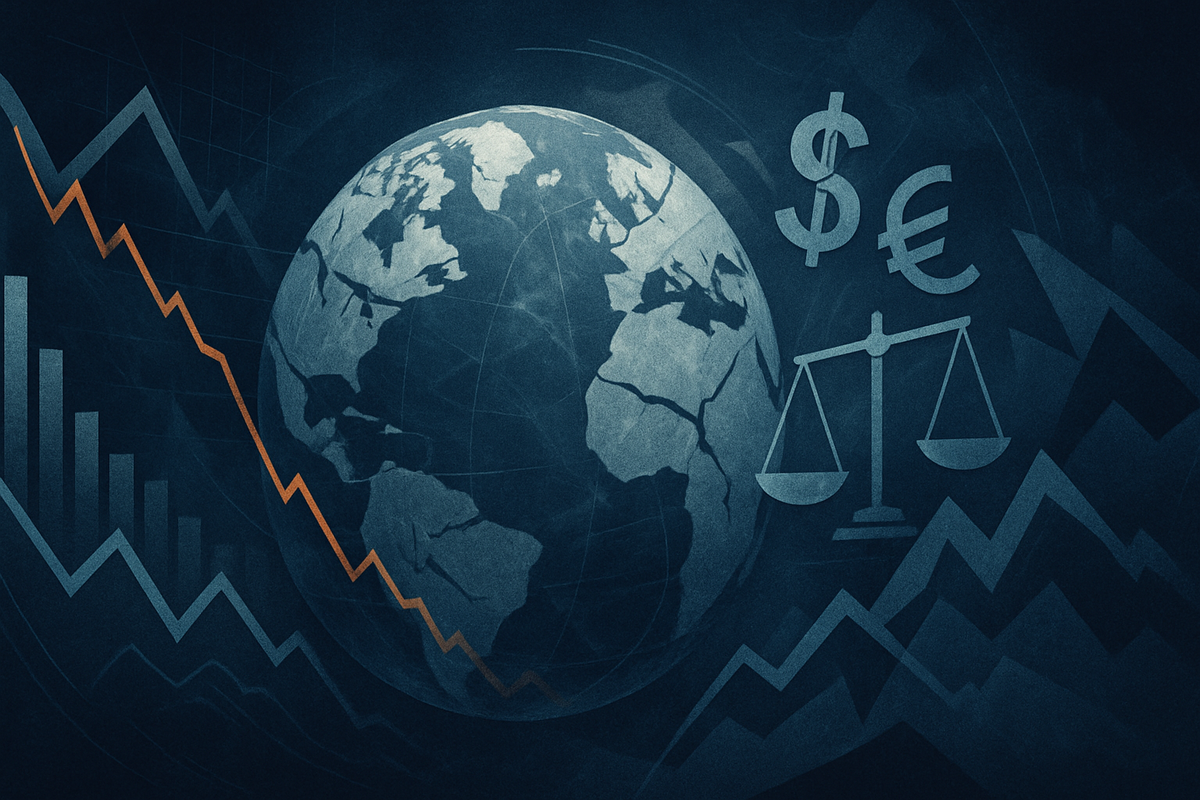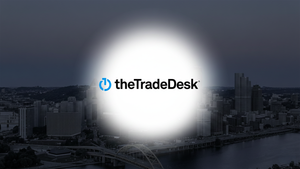Financial News
Global Economic Outlook Shrouded in Acute Uncertainty as Financial Vulnerabilities and Geopolitical Tensions Mount

The global economy in October 2025 finds itself navigating a landscape of profound and acute uncertainty, with a confluence of financial vulnerabilities and escalating geopolitical tensions casting a long shadow over future market trends. Despite pockets of unexpected resilience, particularly in some equity markets, the overarching sentiment points towards a continued slowdown in global growth. This precarious situation demands heightened vigilance from investors, businesses, and policymakers alike, as the potential for sharp market corrections and disrupted supply chains looms large.
Immediate implications include increased volatility across asset classes, a cautious approach to investment decisions, and a re-evaluation of risk exposures. Central banks face a delicate balancing act, with divergent monetary policies adding another layer of complexity to an already intricate global financial system. The interconnectedness of these challenges suggests that no region or sector is immune to the potential ripple effects of this pervasive uncertainty.
A Precarious Balance: Financial Instability and Geopolitical Fault Lines
The current state of global economic uncertainty is multifaceted, stemming from several deeply entrenched issues. Financial sector instability remains a significant concern. Stretched asset valuations, particularly in the technology sector driven by Artificial Intelligence (AI) developments, have raised alarms about a potential "bubble" that could lead to a sudden repricing and impact wealth and investment. Sovereign debt markets are also under pressure, with widening fiscal deficits, higher real interest rates, and elevated debt levels globally, signaling increasing fiscal stress. Many low-income countries are particularly vulnerable due to limited fiscal space and reduced aid flows.
Furthermore, the increasing role of nonbank financial institutions (NBFIs) presents a structural vulnerability. Real estate markets, especially China's (SSE: 600048) struggling property sector, continue to pose substantial risks to national and global financial stability due to banks' significant exposure. Developed markets are not immune, with commercial and office real estate in the United States and Europe grappling with reduced demand and increased financing costs. Business insolvencies have continued to climb, notably in Europe (+11%) and Asia-Pacific (+12%) in 2025. Adding to this complexity is the divergence in monetary policies; while many G7 central banks have begun rate reductions, the US Federal Reserve (FED) remains cautious, impacting global financial conditions and capital flows, especially for emerging markets.
Geopolitical tensions are equally potent contributors to the prevailing uncertainty. Trade policy uncertainty, driven by new tariffs imposed by the United States (e.g., on Chinese goods and Indian imports), is a central theme. These protectionist measures act as supply shocks for imposing countries and demand shocks for targeted economies, hindering global trade and investment. The prospect of escalating tariffs and broader "decoupling" between the US and China, alongside potential retaliatory actions from regions like the European Union, poses a significant risk to global output and efficiency. Ongoing conflicts, such as the Russia-Ukraine war and the Israel-Hamas conflict, continue to disrupt cross-border trade, investment, and supply chains, leading to higher commodity prices and increased sovereign risk premiums. Political fragmentation and policy volatility, including a partial US government shutdown in October 2025, further compound the economic gloom, directly impacting investment decisions.
Navigating the Volatility: Winners and Losers in a Turbulent Market
In an environment of such profound uncertainty, the fortunes of public companies will diverge sharply, creating both significant challenges and unique opportunities. Companies with robust balance sheets, diversified revenue streams, and strong pricing power are better positioned to weather economic headwinds. Conversely, those with high debt loads, exposure to volatile commodity markets, or reliance on specific geopolitical regions may face considerable pressure.
Potential Losers:
- Companies in the Chinese Real Estate Sector: Firms like Evergrande Group (HKG: 3333) and Country Garden Holdings (HKG: 2007) continue to face immense pressure due to decreasing new home sales and falling property prices, threatening their solvency and the broader financial system.
- Commercial Real Estate Developers and Lenders: Companies with significant exposure to struggling commercial and office real estate in the US and Europe, such as Brookfield Property Partners (NASDAQ: BPYP) or European banks with large property loan portfolios, could see valuations decline and loan defaults rise.
- Companies Reliant on Globalized Supply Chains: Manufacturers and retailers heavily dependent on complex international supply chains may suffer from escalating trade tariffs and geopolitical disruptions. For example, multinational corporations like Apple Inc. (NASDAQ: AAPL) with extensive manufacturing in China could face increased costs and operational hurdles due to "decoupling" efforts.
- Export-Oriented Businesses in Tariff-Targeted Nations: Companies in China and other nations facing new US tariffs, particularly in sectors like technology and manufacturing, will likely see reduced demand and profitability for their exports.
- Highly Leveraged Companies: Businesses with substantial debt will struggle with higher real interest rates and tightening credit conditions, making refinancing more expensive and increasing the risk of insolvency.
Potential Winners:
- Defense and Cybersecurity Firms: Escalating geopolitical tensions typically boost demand for defense contractors like Lockheed Martin (NYSE: LMT) and Raytheon Technologies (NYSE: RTX), as well as cybersecurity providers like Palo Alto Networks (NASDAQ: PANW) due to increased national security spending.
- Gold Mining Companies and Precious Metals ETFs: In times of uncertainty, gold acts as a safe-haven asset. Companies like Barrick Gold Corp. (NYSE: GOLD) and ETFs such as SPDR Gold Shares (NYSEARCA: GLD) could see increased investor interest.
- Domestic-Focused Infrastructure and Manufacturing: As nations prioritize resource security and localized production, companies involved in domestic infrastructure development or reshoring manufacturing, potentially benefiting from government incentives, could thrive.
- Companies with Strong Cash Flows and Low Debt: Financially sound companies, irrespective of sector, are better positioned to acquire distressed assets or invest strategically during downturns.
- Energy Companies (with caveats): While geopolitical tensions can drive up oil and gas prices, benefiting producers like ExxonMobil (NYSE: XOM) or Chevron (NYSE: CVX), the volatility also presents risks, particularly if conflicts impact shipping routes. However, companies focused on energy independence or alternative energy sources might see long-term strategic advantages.
Wider Significance: Reshaping Global Economic Paradigms
This period of acute uncertainty is not merely a transient phase but rather a significant inflection point, reshaping broader industry trends and challenging established economic paradigms. The retreat from globalization, driven by protectionism and geopolitical alignment, is accelerating, leading to a fragmentation of global trade and investment. This "decoupling" trend is compelling multinational corporations to reassess their supply chain resilience, often leading to reshoring or nearshoring initiatives, which could fundamentally alter global manufacturing footprints. The shift from purely economic considerations to those of national security and geopolitical alignment in trade relationships introduces a premium to commodity prices, especially for strategic minerals and energy resources.
The ripple effects are profound. Competitors and partners across various industries are forced to adapt to a more volatile and less predictable environment. For instance, technology companies reliant on global talent and manufacturing may face increased costs and regulatory hurdles, while logistics and shipping companies must navigate disrupted routes and higher insurance premiums. Regulatory and policy implications are also significant, with governments likely to intervene more actively to secure critical supplies, protect domestic industries, and manage sovereign debt levels. The partial US government shutdown in October 2025 underscores the growing institutional fragility and policy volatility, further complicating long-term planning for businesses.
Historically, periods of such widespread uncertainty, often marked by trade wars and geopolitical conflicts, have led to significant reconfigurations of global power dynamics and economic structures. Comparisons can be drawn to the Cold War era's economic blocs or the post-2008 financial crisis regulatory overhauls. However, the current landscape is unique due to the simultaneous pressures of advanced technological disruption (e.g., AI's potential impact and bubble concerns), unprecedented levels of global debt, and a more interconnected yet fragmenting world. The convergence of these factors suggests that the current uncertainty is not just a cyclical downturn but potentially a structural shift, demanding a fundamental re-evaluation of economic models and investment strategies.
What Comes Next: Navigating a Path Through the Fog
Looking ahead, the global economic landscape is poised for a period of continued turbulence, with both short-term challenges and long-term strategic shifts on the horizon. In the short term, market volatility is expected to persist, driven by ongoing geopolitical developments, central bank policy adjustments, and data releases regarding inflation and growth. Investors should anticipate potential corrections in overvalued equity sectors, particularly if the AI market bubble concerns materialize. Commodity prices, especially oil and gold, will remain highly sensitive to geopolitical escalations, with a significant upside risk for oil if Middle Eastern conflicts impact critical shipping routes.
For businesses, strategic pivots and adaptations will be crucial. This includes accelerating supply chain diversification and resilience efforts, exploring opportunities in domestic markets, and investing in automation and efficiency to mitigate labor cost pressures. Market opportunities may emerge in sectors benefiting from de-globalization, such as localized manufacturing, and in defensive assets like precious metals. Challenges will include navigating complex regulatory environments, managing increased borrowing costs, and adapting to shifting consumer and investor sentiment.
Several potential scenarios could unfold. A "muddle-through" scenario sees continued slow growth, persistent inflation, and contained geopolitical conflicts, leading to prolonged uncertainty. A more pessimistic "stagflationary" scenario could arise if major geopolitical conflicts escalate, severely disrupting supply chains and driving up commodity prices while economic growth stagnates. Conversely, a more optimistic scenario, though less likely in the immediate future, would involve a coordinated de-escalation of tensions and effective policy responses that restore confidence and foster renewed growth. The trajectory of US trade policy and the actions of the Federal Reserve will be particularly influential in shaping these outcomes.
A Comprehensive Wrap-up: Enduring Impact and Investor Watchpoints
In summary, the global economic outlook in October 2025 is dominated by a pervasive sense of uncertainty, born from a potent mix of financial sector vulnerabilities and escalating geopolitical tensions. Key takeaways include the risk of stretched asset valuations, sovereign debt pressures, real estate fragilities, and the disruptive force of protectionist trade policies and ongoing international conflicts. These factors are collectively projected to lead to a global growth slowdown, persistent inflationary pressures in some regions, and continued market volatility.
Moving forward, the market will be characterized by greater fragmentation, a re-evaluation of global supply chains, and an increased premium on resilience and domestic security. The lasting impact could be a more localized and less interconnected global economy, with a shift in investment flows towards safer assets and strategically important sectors. The current environment underscores the importance of robust risk management and agile business strategies.
Investors should closely watch several critical indicators in the coming months: the trajectory of central bank interest rates, particularly from the US Federal Reserve; developments in major geopolitical flashpoints such as the Russia-Ukraine and Israel-Hamas conflicts; the evolution of US-China trade relations and tariff policies; and the health of the Chinese property sector. Additionally, monitoring corporate earnings reports for signs of margin pressure or resilience, and the performance of key commodity markets, will provide crucial insights into the direction of the global economy. Prudence, diversification, and a long-term perspective will be paramount in navigating these turbulent waters.
This content is intended for informational purposes only and is not financial advice
More News
View More




Recent Quotes
View More
Quotes delayed at least 20 minutes.
By accessing this page, you agree to the Privacy Policy and Terms Of Service.



